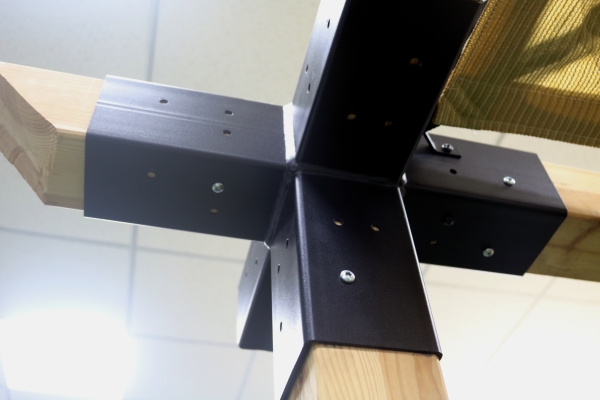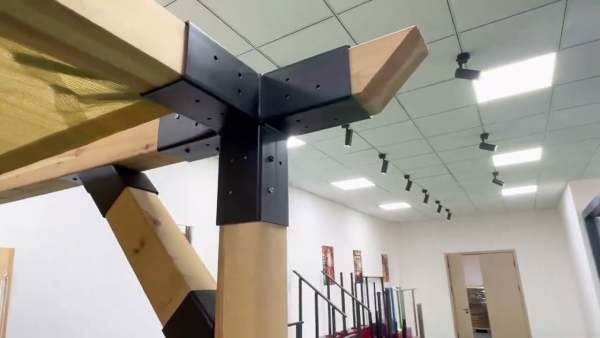Table of Contents
Benefits of Using Stainless Steel in Industrial Applications
Stainless steel is a versatile and durable material that is widely used in various industrial applications. Its unique properties make it an ideal choice for a wide range of industries, including construction, automotive, aerospace, and food processing. Understanding the hardness of stainless steel is essential for ensuring its suitability for specific applications.
Stainless steel is known for its high strength and corrosion resistance, making it a popular choice for applications where durability and longevity are essential. The hardness of stainless steel is determined by its composition and microstructure. Stainless steel is an alloy of iron, carbon, and other elements such as chromium, nickel, and molybdenum. The addition of these elements enhances the strength and corrosion resistance of the material.
One of the key factors that determine the hardness of stainless steel is its microstructure. Stainless steel can exist in different crystalline structures, known as austenitic, ferritic, martensitic, and duplex. Each of these structures has different properties, including hardness. Austenitic stainless steel, for example, is non-magnetic and has a relatively low hardness compared to other types of stainless steel. Ferritic stainless steel, on the other hand, is magnetic and has a higher hardness due to its microstructure.
The hardness of stainless steel is typically measured using the Rockwell hardness scale. This scale measures the resistance of a material to indentation or penetration. The Rockwell hardness test involves applying a specific load to a material and measuring the depth of the indentation. The hardness value is then determined based on the depth of the indentation. Stainless steel typically has a hardness value ranging from 40 to 60 on the Rockwell scale, depending on its composition and microstructure.
The hardness of stainless steel is an important factor to consider when selecting a material for industrial applications. In industries where abrasion and wear resistance are critical, such as mining and construction, stainless steel with a higher hardness is preferred. Martensitic stainless steel, which has a high hardness and wear resistance, is commonly used in applications where durability is essential.
In addition to its hardness, stainless steel offers a range of other benefits that make it an attractive choice for industrial applications. Stainless steel is highly resistant to corrosion, making it ideal for use in harsh environments where exposure to moisture, chemicals, and other corrosive substances is common. Its high strength-to-weight ratio also makes it a cost-effective option for applications where weight savings are important.
Stainless steel is also easy to clean and maintain, making it a hygienic choice for applications in the food processing and pharmaceutical industries. Its smooth surface resists bacterial growth, making it an ideal material for equipment and surfaces that come into contact with food or pharmaceutical products.
Overall, the hardness of stainless steel plays a crucial role in determining its suitability for specific industrial applications. By understanding the properties of stainless steel and how they relate to hardness, manufacturers and engineers can select the right material for their needs. With its high strength, corrosion resistance, and durability, stainless steel continues to be a preferred choice for a wide range of industrial applications.
Common Misconceptions About the Strength of Stainless Steel
Stainless steel is a widely used material in various industries due to its exceptional properties, including its strength and durability. However, there are common misconceptions about the hardness of stainless steel that need to be addressed. In this article, we will delve into the properties of stainless steel and explore how hard it really is.
One of the misconceptions about stainless steel is that it is not as hard as other metals such as carbon steel or titanium. While it is true that stainless steel is not as hard as these metals, it still possesses a high level of hardness that makes it suitable for a wide range of applications. Stainless steel is classified into different grades based on its composition, with each grade having its own unique properties, including hardness.
The hardness of stainless steel is typically measured using the Rockwell hardness scale, which quantifies the resistance of a material to indentation or penetration. Stainless steel grades such as 304 and 316 are commonly used in industrial applications due to their high hardness levels. These grades are known for their excellent corrosion resistance and strength, making them ideal for use in harsh environments.

Another misconception about the hardness of stainless steel is that it cannot be hardened through heat treatment. While stainless steel is known for its non-hardenable nature compared to carbon steel, certain grades can be hardened through heat treatment processes such as annealing, quenching, and tempering. These processes involve heating the stainless steel to a specific temperature, followed by rapid cooling and reheating to achieve the desired hardness level.
Stainless steel can also be hardened through cold working, a process that involves deforming the material at room temperature to increase its strength and hardness. Cold working can significantly improve the hardness of stainless steel, making it suitable for applications that require high levels of strength and durability.
It is important to note that the hardness of stainless steel is not the only factor that determines its overall strength. Other properties such as tensile strength, yield strength, and ductility also play a crucial role in determining the performance of stainless steel in different applications. Tensile strength refers to the maximum amount of stress a material can withstand before breaking, while yield strength is the amount of stress at which a material begins to deform permanently.
Ductility, on the other hand, is the ability of a material to deform without fracturing under tensile stress. Stainless steel is known for its excellent combination of strength and ductility, making it a versatile material that can be used in a wide range of applications.
In conclusion, stainless steel is a hard and durable material that offers excellent strength and corrosion resistance. While it may not be as hard as other metals such as carbon steel or titanium, stainless steel still possesses a high level of hardness that makes it suitable for various industrial applications. By understanding the properties of stainless steel and debunking common misconceptions about its hardness, we can appreciate the versatility and reliability of this remarkable material.







